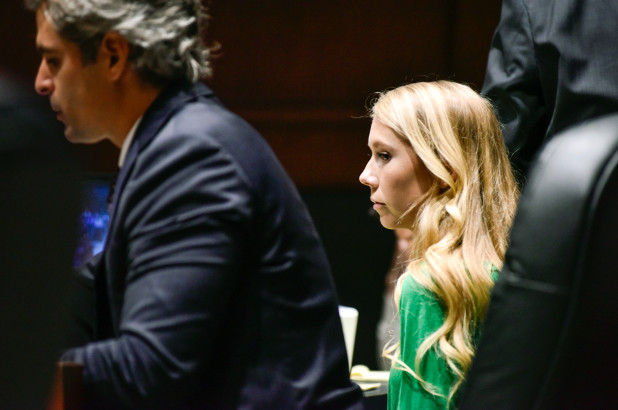Skylar Richardson Case: What We Can Learn
Skylar Richardson appears in court next to her attorney, Charles M. Rittgers
The case of Skylar Richardson– a story that acquired international recognition in Lebanon, Ohio was put to rest on Sept. 12, leaving behind a message about social media for many adolescents to learn from.
The story centers around Skylar Richardson, a now 20-year-old, who was accused of involuntary manslaughter, aggravated murder, abuse of a corpse, and child endangerment after the burying of her stillborn daughter in her backyard.
According to the trial’s proof that there was no scientific evidence, Richardson was found not guilty on all charges except the abuse of a corpse.
Despite this being the only charge, Richardson’s name was still splashed all over the media, receiving attention from DailyMail, Good Morning America, Yahoo News, and several other sources.
The attention emerges from the widespread use of social media. Headlines, un-checked facts, and so-called “clickbait”, or content that is used to attract attention, are plaguing the internet with the task of deciphering the truth from everything else.
Elias Demeropolis, RHS Mock Trial Coach and member of the defense team representing Skylar Richardson, said “Social media blew the trial way out of proportions. The clickbait generation and the clickbait method of writing articles severely destroyed the integrity of a fair trial in the eye of the public.”
Supporting Demeropolis’s claim, The New Yorker said, “Psychologists have long known that first impressions really do matter—what we see, hear, feel, or experience in our first encounter with something colors how we process the rest of it. Articles are no exception.”
Concerning the ways to avoid the misconstrued information that can easily spread on the internet, Demeropolis stated to “. . . critically think about headlines and media. Don’t take it as face value.”
Even with lessons in school about leaving a careful digital footprint, it may be difficult for teenagers to fully encompass the responsibility of decoding information associated with social media.
To help the situation, Demeropolis states “The responsibility is on the authority and media to not exercise self-aggrandizing prejudices that they discriminated for the sake of popularity.”
The responsibility that comes with decrypting interpretations in social media isn’t defined in the terms and conditions, rather it is a skill that teenagers must learn themselves.
“I think our generation lives in a culture of social media news so it can be very easy to be missguided [sic] by false news headlines. We see false news on Twitter all the time, so it’s really important to make sure the source is credible, especially before you tell other people,” said senior Juliana Curtis.
Additionally, what each person has in their text messages, pictures, and direct messages can be used against them in the future. Pertaining to the trial, Richardson’s text messages with her mother and ex-boyfriend were used as evidence against her.
“Be mindful that your text messages are never really gone and of who will be in surveillance of them,” said Demeropolis.
Text messages, headlines, and profiles on social media all define how we appear as people. The Skylar Richardson trial was an example of just that. With proof that stakes are high with college acceptances and workplace opportunities, sometimes it is better to delete a text than to risk your own future.

Lainy is a senior and this is her second year in journalism. As a Staff Writer and Editor, Lainy is beginning to experiment with her future of a major in journalism. She spends most of her time being a barista outside of school while still juggling being a member of NHS, the Cappies, VAB, Student Body, Mock Trial and SNHS. She looks forward to pursuing her passion and furthering her education in journalism.






